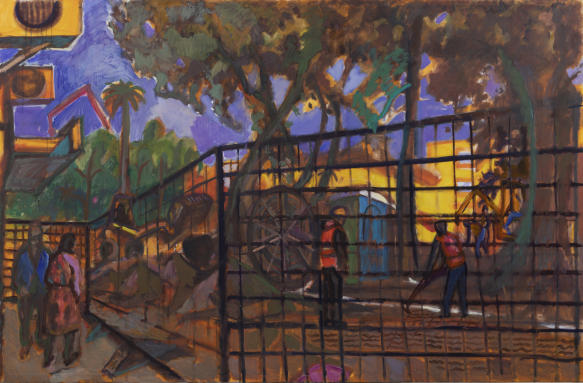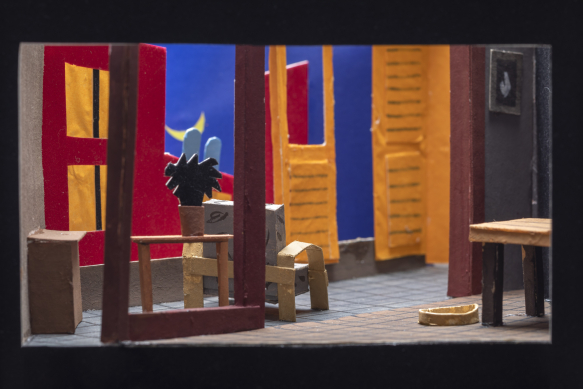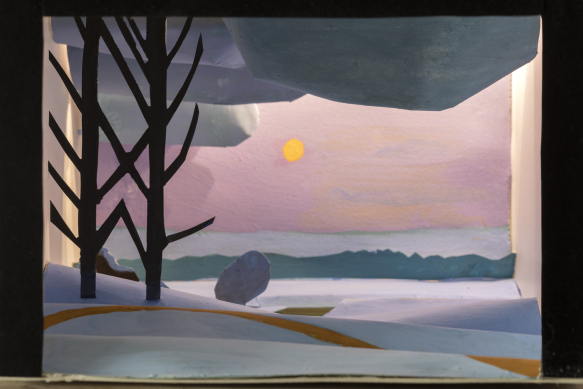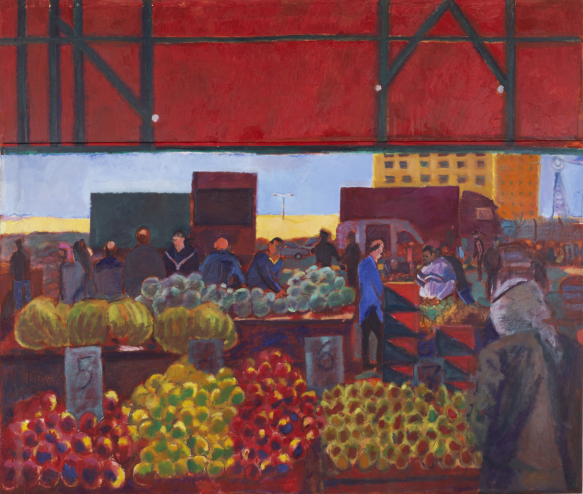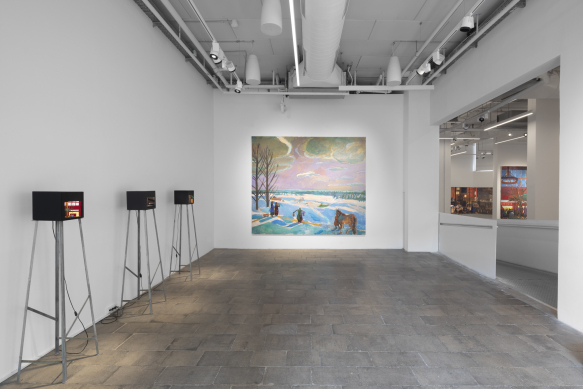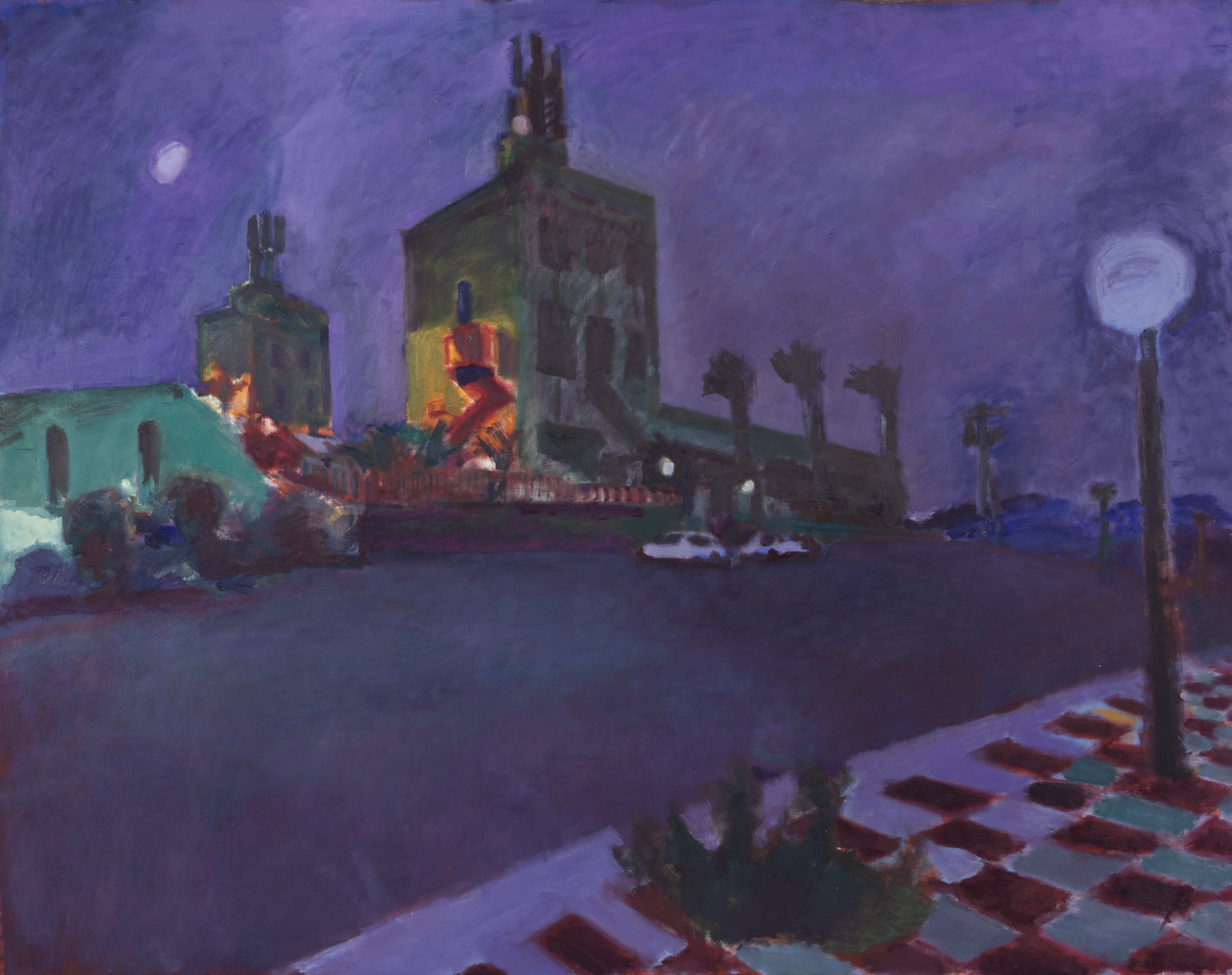“A country road. A tree. Evening.”
These three short stage directions at the opening of Samuel Beckett’s Waiting for Godot dictate the mood that dominates the entire play. A futile wait, a meaningless search. Existential absurdity that ends up as mundane absurdity.
A desert road. An abandoned hotel. Night.
Natalia Zourabova’s new works offer decor without a play; they build an atmosphere without words, providing stage directions for our existential theater. But even in the absence of words, the play has already been written. It is somewhere in our minds, partly familiar to us, like any good setting; it awakens dormant areas, elicits distant memories, touching on our collective memory. An abandoned hotel in Arad, a market full of strangers, roadworks.
The decor invites us to tell a story that we may momentarily recall, even though we are not entirely familiar with yet. Like the paintings, it originates in reality, but continues to develop in Zourabova’s imagination; continues to twist and turn in our imagination.
We have become accustomed to living in settings, so much so that we cannot always differentiate reality from the way we interpret it. We think to ourselves that it is the perfect setting: palm trees bent over the ocean are the perfect setting for a vacation; a dark candlelit castle is the perfect setting for a murder; the beach at sunset is the perfect setting for a marriage proposal; a deserted airport is the perfect setting for solitude. Scenes from movies and the theater blend with commercial sets and real memories, with the setting of life as we have experienced it.
The city of Arad serves Zourabova as the perfect setting for a broken dream. Only some of the paintings in the exhibition “Arad” were actually painted in that city, but the notion of Arad as a desert utopia inspires the entire show. Arad was established in the desert with the hope of creating a different society—a city planned in detail by architects, who built patio homes and staircases intended to correspond with the desert climate. A city that brought with it a prestigious...
Read more 
